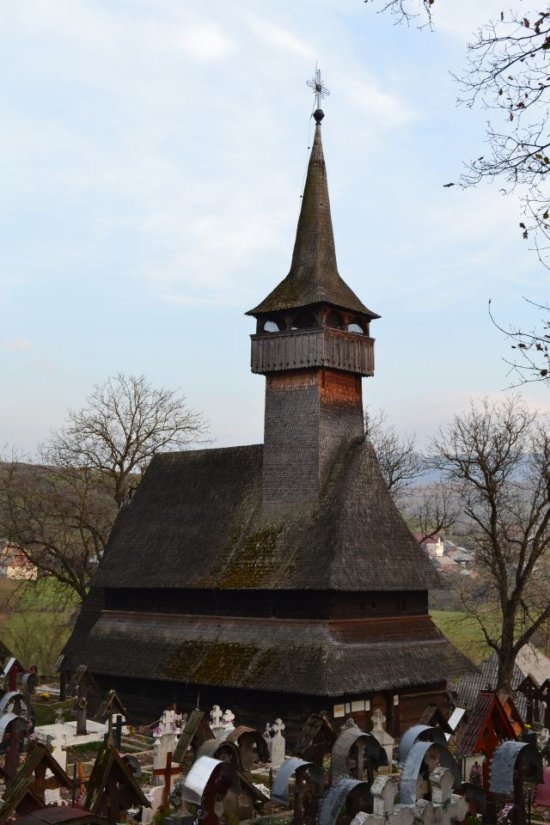 The wooden church of Ieud Deal is a masterpiece in itself. The Church is the most representative example of the value of Alexander Ponehalschi’s painting. The church was founded by nobles from the local family of Balea who had to climb the ladder of Maramureş’ aristocracy. The Greek Catholic Church of Ieud has an austere exterior appearance, which is toned down on the inside thanks to the refined sculpture of the consoles, as well as the bright colours of the mural. Since 1900, John Mihaly of Apşa included the church in Ieud among the most beautiful churches in Maramureş.
The wooden church of Ieud Deal is a masterpiece in itself. The Church is the most representative example of the value of Alexander Ponehalschi’s painting. The church was founded by nobles from the local family of Balea who had to climb the ladder of Maramureş’ aristocracy. The Greek Catholic Church of Ieud has an austere exterior appearance, which is toned down on the inside thanks to the refined sculpture of the consoles, as well as the bright colours of the mural. Since 1900, John Mihaly of Apşa included the church in Ieud among the most beautiful churches in Maramureş.

The wooden church of Ieud Deal is a masterpiece in itself. The Church is the most representative example of the value of Alexander Ponehalschi’s painting. The church was founded by nobles from the local family of Balea who had to climb the ladder of Maramureş’ aristocracy. The Greek Catholic Church of Ieud has an austere exterior appearance, which is toned down on the inside thanks to the refined sculpture of the consoles, as well as the bright colours of the mural. Since 1900, John Mihaly of Apşa included the church in Ieud among the most beautiful churches in Maramureş.
The Greek Catholic Vicar of Maramureş, Tit Bud, dated this church in 1364, based on an inscription found on one of the beams inside the church. Historian Radu Popa believes that the church was built during the Tatar invasion in 1717 and scholar Marius Porumb proposed a compromise: the church was rebuilt after the Tatar invasion, on the site of an ancient place of worship.
Icelandic researcher Olafur Eggertsson dated the church using the dendro-chronological method to the second decade of the seventeenth century. And indeed, the church was restored, between 1764 and 1765 at the expense of nobleman Mihai Balea, viscount of Maramureş. This noble hired painter Alexander Ponehalschi, who did all the three rooms of the church.
In 1782, a movable icon was brought in. During the restoration of the church the windows were enlarged. However, two original windows, much smaller, were kept on the the west side, between the gutters. At that time, the two-door old iconostasis was replaced by an iconostasis with three doors, in an innovative trend that was sweeping the Greek Catholic map of Maramureş at the time.
Perfect Proportions
In the era in which it was built, the church on the hill of Ieud was considered a cumbersome place of worship, yet perfectly proportioned. The length of the church is 11.87 metres and has a width of 7.15 metres. The height of the nave is equal to the width. This proportion system was later adopted for other places of worship under construction in Maramures. The access ladder to the tower is carved from a single piece of wood.
Photo credit: George Trandafir, www.touringromania.com






